Molten lava, gold and red, coursing richly over dark rocks. An aristocratic cavalry officer’s perfectly oiled, brown leather boots, gleaming with scented oils of honey and rose. The richest amber and the darkest honey, intertwined in a kiss.
Those are the images which come to mind when I try “M” from Puredistance, a niche luxury house whose exclusive (and very costly) perfumes are made by Master Perfumers in London and New York. Puredistance M, as it is known, has an added cache: it’s made by the great Roja Dove himself.
Roja Dove is the only man in the world who bears the title, Professeur du Parfum. His legendary nose is said to be able to detect over 800 perfumes from a mere sniff. After working for almost twenty years for Guerlain, he left to pursue his own ventures which include the speciality boutique within a boutique at Harrod’s called Roja Dove Haute Parfumerie.
He also creates his own perfumes — some of the most highly acclaimed and admired in the world. A few years ago, he collaborated with Puredistance , a company whose perfumes typify the luxury and richness associated with his own fragrances. Each Puredistance perfume is an extrait de parfum blended at a whopping 25-32% concentration and filled with the finest perfume oils. Puredistance M for Men and Women (sometimes written as PuredistanceM) is no exception.
 Released in 2010, Puredistance M is technically categorized on Fragrantica and elsewhere as a unisex leather perfume. All the talk about leather led me to expect a hardcore leather scent — which I’m very wary of — so I was surprised to find “M” to be a glorious lovechild of an oakmoss chypre and an oriental that merely happened to have leather undertones. I was also relieved to see Puredistance’s own description for the perfume state pretty much the same thing:
Released in 2010, Puredistance M is technically categorized on Fragrantica and elsewhere as a unisex leather perfume. All the talk about leather led me to expect a hardcore leather scent — which I’m very wary of — so I was surprised to find “M” to be a glorious lovechild of an oakmoss chypre and an oriental that merely happened to have leather undertones. I was also relieved to see Puredistance’s own description for the perfume state pretty much the same thing:
M is inspired by the stylish comforts of the interior of a grey Aston Martin. M is a leather
chypre of classic proportions… with an unexpected oriental twist, which lends the perfume an original and modern feel.The warm smoothness of the blend is incomparable. The composition purrs softly along, weaving the leather accord into the road-map of spices, woods and resins. The chic, sensual and comforting trip takes the wearer from the leathery start to the softly-smoldering woody, balsamic base via the delicately earthy heart.
Enveloping and comforting as it is, M, with its elegantly smoky leather, has a hint of excitement and danger, which is just how it should be, in a fragrance inspired by Bond’s car.
Ingredients: Bergamot, Lemon, Rose, Jasmine, Cinnamon, Patchouli, Mosses, Cistus [Labdanum], Vetiver, Vanilla, Leather, Musk.
Puredistance M opens on my skin with a rich, unctuous, baroque mix of dark rose, labdanum, leather, jasmine, musk and a subtle dash of citrus. There is the swirling aura of leather all around, but it’s almost ephemeral at this point and nothing distinct. And, yet, there is also the faint impression of a barnyard that pops up, only to flit away after two minutes.

Rose Petal Honey. Source: Gardenista.com. (Click on photo for the website which has a DIY recipe for rose-infused honey.)
The rose is rich, dark, beefy and meaty; it is also slathered with the darkest honey you can imagine. The sweetness tames any zestiness of the citrus note, rendering it sweet, not sharp. There is a noticeable backdrop of oakmoss but, unlike many chypres, it is never fusty, musty or dusty. Instead of being pungently dry, the mosses are sweetened by the honey notes from the labdanum resin — it’s absolutely glorious.
Interestingly, the second time I tested Puredistance M, the oakmoss was even less noticeable in the start. Same with the citrus notes. Instead, the predominant impression was a panoply of honeyed beeswax, rich roses, dark honey and cinnamon. In fact, honeyed beeswax is such a persistent part of this perfume on both occasions that I wore it that I am convinced it is one of the hidden ingredients, along with cloves and a smidgen of cumin. I am also convinced that Puredistance is one of those perfectly blended perfumes which will reveal different facets each time you wear it.
The combination of notes — on both occasions — lead to an overwhelming impression of molten lava: a fiery river of honeyed labdanum turned burnished red from spices and roses. The labdanum is so rich that, at times, it has a faintly burnt quality to it. In fact, during my first test, there was an impression almost of burnt wax. The predominant note, however, is of a very balsam-like resin that is as dark as possible; it’s unctuous, opaque and thick. It’s hard to describe what labdanum smells like to someone who has never smelled it but, at its core, it is far more than just an amber-y smell. It takes honey to a depth that is almost unimaginably medieval in its complex, burnished richness. At the same time, it has a subtle, almost dirty, nutty, slightly leathered edge that is never animalic but which definitely turns the whole thing into something more masculine and musky than actual honey. I love labdanum and it is the fiercely beating heart to Puredistance M, evident from start to finish, in the richest way possible.
About fifteen minutes in, the leather starts to appear. It has the feel of darkly brown, softly caramelized aged leather. There is a subtle, earthy feel to it that I suspect comes from the underpinnings of the vetiver which is never a really detectable note, in and of itself, but which is a quiet thread in the overall tapestry. I know the perfume is meant to evoke the leather seats of a luxury car and, for most people, Puredistance M does exactly that. For me, however, I imagine an aristocratic cavalry officer’s well-worn riding boots, tended to lovingly with a mix of beeswax and oils tinged with rose, honey and jasmine.
This is really the smell that I expected from Chanel‘s legendary Cuir de Russie which was inspired by Tsarist imperial officers and the Russian treatment of birch leather. Instead, on my skin, Cuir de Russie was all horse feces under a heavy pile of soap. I’m in a very distinct minority on that point, but the disappointment remains the same. No Cossacks, no Imperial Grand Dukes, no passionate sensuality evoking Coco Chanel’s love affair and, most of all, no smooth, aristocratic leather.
With Puredistance M, however, the leather is pure elegance. It feels screamingly rich, covered with cognac, warmed by honey, and reddened by quiet spices. The latter start to become more evident about thirty minutes in. Cinnamon is the most obvious note, but there is also the merest touch of cumin. It’s not the sort of sweaty-smelling cumin; it’s simply dry and a little bit earthy. I’m convinced there are also big dollops of cloves in Puredistance M, adding a little bit of fiery heat to the sweet honey and resinous labdanum.
The floral and musk accord also become more noticeable around this time. The musk is not skanky, sour, or redolent of personal intimacies. Nor is it even remotely animalic. Instead, it is quietly intertwined with the rose and the increasingly evident jasmine notes for a combination that is narcotically heady and extremely rich.
An hour in, to my surprise, Puredistance M changes quite drastically. First, it becomes significantly less opaque and thick, though it is still very strong and heady. Second, it turns from a floral oakmoss chypre with oriental elements into something that, to me, is purely orientalist in nature. The oakmoss was always a subtly blended accord in the opening, intertwined perfectly with the other notes but never dominating. Now, however, it is completely overshadowed by the growing impression of honeyed beeswax with spices and cinnamon-tinged vanilla. The floral notes are still there, however, including the increasingly noticeable jasmine note mixed with a slightly sweet dose of patchouli. Lastly, the sillage has dropped quite substantially. Where Puredistance M was evident from a few feet away in the first hour (at least, when you put on a decent-sized amount), it is now hovering just a foot above the skin.
In this first ninety minutes and during the opening stage, Puredistance M strongly reminded me of Hermès‘ classic Bel Ami in its vintage form. Bel Ami is a scent I grew up with and loved, so while I haven’t smelled it in years, it was the first thing on my mind in the opening hour of Puredistance M. In fact, I’ve read that Bel Ami is one of Roja Dove’s favorite fragrances.
Unsurprisingly, therefore, vintage Bel Ami is the scent to which most people compare Puredistance M, suggesting that you save your money on the latter and buy the Hermès instead. I don’t necessarily agree. Even if we consider the much stronger, more potent vintage version of Bel Ami (as compared to its current reformulated self), Puredistance M is still significantly richer, darker and denser, with much more labdanum and far less citrus influences. Plus, based on my memories of Bel Ami, it only explains the first ninety minutes of Puredistance and certainly doesn’t fit with its remaining development. Because, you see, at the start of the second hour, the perfume changes again and now, it is almost a dead ringer for Serge Lutens‘ Cuir Mauresque!
I recently reviewed and loved Cuir Mauresque, so I was quite stunned to find its middle notes replicated here in Puredistance’s similar stage. There are differences in the notes in each perfume and Puredistance significantly lacks the animalic civet of the Lutens but, on my skin, the middle stages for both perfumes was musky jasmine, honey, and resined amber. The burnt styrax in the Lutens is mimicked here by the occasionally burnt aspect to the different sort of resinous amber, the labdanum, and both scents share a subtle, sometimes imperceptible hint of cumin and cloves — all supported on the subtle base of leather. It helps that the Lutens was never very animalic or dirty on my skin because the civet was never strong. Here, however, the real link between the two fragrances is the jasmine, musk and dark amber combination. With the oakmoss having vanished in the second hour, Puredistance has turned into a seductive floral oriental.
The final stage of Puredistance M is very simple and is no longer anything close to Cuir Mauresque. The dry-down consists almost entirely of dark, dirty labdanum amber; rich honey and beeswax; and a hint of musky vanilla hovering underneath. The amber accord is tinged by the merest breath of something earthy, but it’s as light as a feather. In its very final hour, Puredistance M evoked pure honey and nothing more. At no time in its development were some of Puredistance’s more earthy notes dominant players; both the vetiver and patchouli added some underlying support but they were barely noticeable in their own right. There was no dirtiness or rooty darkness to the scent, and never anything animalic to the leather.
Interestingly, for a perfume with such strong notes, the sillage on Puredistance was not enormous. It was evident from a few feet away for the first hour, then dropped dramatically. By the second hour, the scent hovered half a foot away from the skin. Thereafter, it became very close and you’d have to be nuzzling someone’s neck to detect it.
The sweetness and spices make Puredistance the least “butch” leather that I have ever encountered. When you throw in the prominant florals, it also becomes one of the most unisex leathers. This is nothing like the stony, cold, black leather that I experienced with Montale‘s Aoud Cuir d’Arabie or the barnyard leather of Chanel‘s Cuir de Russie. It’s also far from the bitter, green, harshness of the butch legend, Bandit by Robert Piguet, which I admired and found most intriguing but which, in hindsight, is simply too brutal for me. It certainly is not remotely close to Tom of Finland by Etat Libre d’Orange which wasn’t even leather on my skin but, rather, powdered, vanilla suede.
Puredistance M is an absolutely marvelous scent, but its steep price is enough to give one the vapors. A miniscule 17.5 ml/ 0.59 fl. oz sized spray (essentially, a travel-sized mini) is a whopping $198. The full 100 ml/ 3.4 fl oz. bottle? A stunning $590! On Luckyscent (where, to my astonishment, that $600 bottle is sold out), one reviewer makes this observation about the scent and the price:
When people say that M makes everything else obsolete, I am afraid that is very close to the truth. From the very first whiff till it fades away (up to 24 hours later), this is an experience of constant astonishment. And just as much – constant, giddy delight. Of course, I will still wear other favorites. But M inhabits that rarified air of very few others – Gobin Daude Nuit Desert and Guerlain Derby come to mind (in terms of quality, not scent). The price is initially off-putting, but the 18ml bottle is easily the equivalent of many 100ml edp’s. The very tiniest little drop last all day, into the night, and into the next morning. Like I said, constant astonishment. This is the real deal.
I don’t agree. I used far more than the tiniest little drop to test the perfume the first time around. When, on the second test, I used the smallest possible amount, the perfume faded away in sillage quite quickly, demonstrated far less complexity, and also lasted far time. On neither occasion did Puredistance M last 24 hours. That said, when I used the equivalent of one large spray, the scent lasted about 11 hours — and I should bloody well hope so for something that is concentrated extrait de parfum! But, again, it was hardly a drop, so I hardly think that the 17.5 ml bottle is “the equivalent” of many 100 ml full bottles of eau de parfum. Nonetheless, on skin which is less voracious than mine, I think the $198 travel mini might be a good compromise if you really love the scent.
[UPDATE – 3/26/13: The perfume, along with all the other fragrances in the Puredistance line is now available in a much more affordable pricing scheme. All four scents now come in a 60 ml bottle of pure parfum extract that costs $330 or €275. For the concentration and size, that is a much, much more accessible deal. You can find the new bottles on the company’s website at the link listed below in the “Details.”]
On Fragrantica, one commentator says simply to buy Bel Ami and to save your money, but I don’t fully agree with that either. Even if you buy vintage Bel Ami on eBay (where I recently saw a bottle starting at around $65), Puredistance M is a much richer affair. Though I can’t remember Bel Ami’s dry-down after all these years, what I do remember is a much more citrus-aromatic chypre which turns into leather that is nothing as sweetly resinous or honeyed as Puredistance M. A review of Bel Ami’s notes on Fragrantica supports that impression: there is no labdanum, not a lot of resin, and those amber notes which are present do not seem to be the driving heart of the perfume according to people’s votes of the main notes. Still, if that is the only financially practical alternative, then Bel Ami may be worth pursuing. (So long as you avoid the current reformulation and stick with vintage.)
My belief is that price is a very subjective thing and, if the quality is there, an outrageous price may well be worth it to a particular individual. For me, a full bottle of Puredistance M is well outside my means. To my cheapskate mind, it translates to five full bottles of Serge Lutens or Chanel. And the 0.5 oz/ 17.5 ml mini is similarly too expensive, given the microscopic size and what else I could buy. If, however, price were no object, I would absolutely buy Puredistance M. The “M” really stands for magnificent, molten masterpiece.
DETAILS:
Cost & Availability: Puredistance M is available in a variety of different sizes and forms on the Puredistance website. You can buy a 17.5 ml travel size spray for $198 or €168. The full bottle is 3.4 oz/ 100 ml and costs $590. [UPDATE: The perfume is now also available in a 60 ml bottle for $330 or €275.] However, you can also buy Puredistance M as part of a sample Gift Set of four Puredistance perfumes (I, Antonia, M and Opardu) with each sample being 2 ml. The whole set costs $59 and includes free shipping. Puredistance M is also available at Luckyscent in both the $198 travel size and the $590 full size, though the latter is sold out until the end of March (2013). Luckyscent also sells a 0.7 ml sample vial for $6. I obtained my sample from Surrender to Chance, where prices start at $3.99 for a miniscule 1/4 of ml vial, $7.98 for a 1/2 vial and $15.96 for 1 ml.



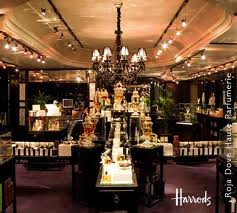










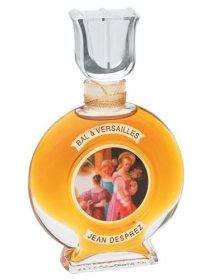
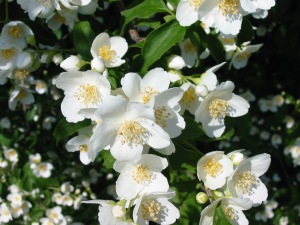










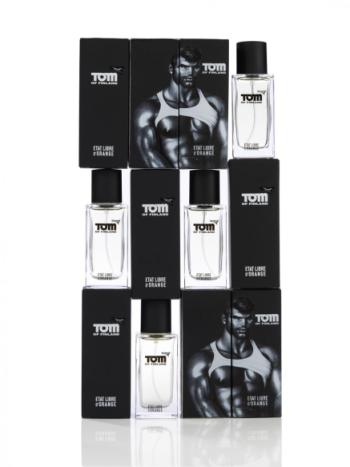



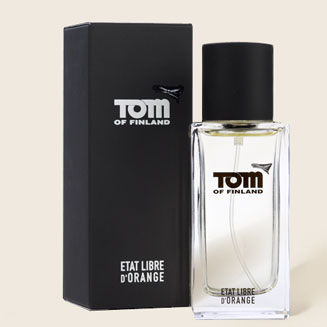
 Many people have complained that État Libre d’Orange Tom of Finland lacks roughness, toughness and any hint of male “body aromas” one would imagine emanating from a Tom of Finland-type man, but to me, the Tom of Finland man, like the fragrance, is clean (almost wholesome), wrinkle-free/smooth, and pale. For those who bemoan the lack of funk in this version, perhaps a Tom of Finland “rough seXXX” flanker will be forthcoming. [Emphasis added.]
Many people have complained that État Libre d’Orange Tom of Finland lacks roughness, toughness and any hint of male “body aromas” one would imagine emanating from a Tom of Finland-type man, but to me, the Tom of Finland man, like the fragrance, is clean (almost wholesome), wrinkle-free/smooth, and pale. For those who bemoan the lack of funk in this version, perhaps a Tom of Finland “rough seXXX” flanker will be forthcoming. [Emphasis added.]